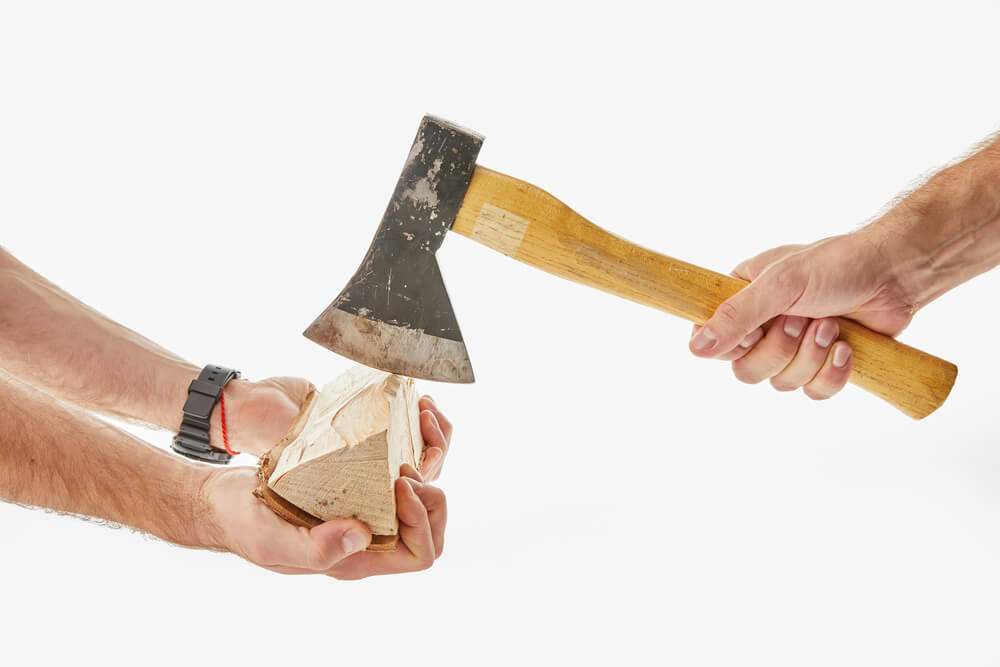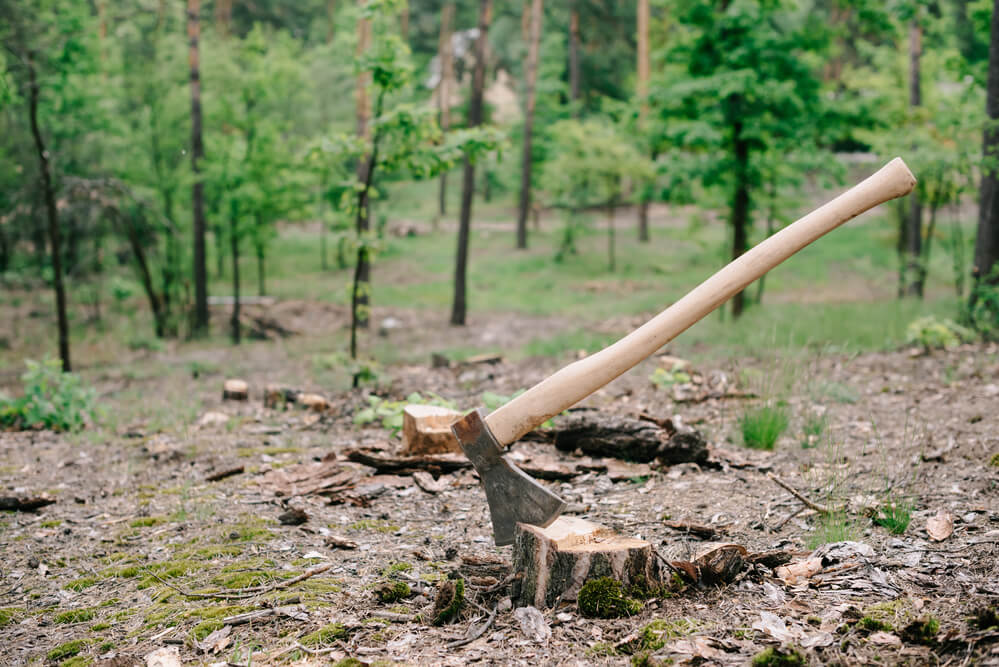Axes are a necessary tool for anyone who enjoys the outdoors, but if the handle on your axe becomes damaged or worn, it can be difficult to fix. No one wants an axe with a loose handle.
In this comprehensive guide, we will walk you through how to replace an axe handle. We’ll provide all the information you need to get the job done safely and correctly. So whether your ax handle is broken or just starting to show wear and tear, follow these instructions and get it replaced in no time!
Why You May Need to Replace an Axe Handle
There are several reasons why you might need to replace the handle on your axe. The most common reason is that the handle has become damaged or worn from use. If the handle is cracked, chipped, or otherwise broken, it will need to be replaced. Even if the handle is not broken, but it is starting to show signs of wear, such as splintering or fraying, it is best to replace it before it breaks.
Another reason you might need to replace the handle on your axe is if you are simply not happy with the way it feels. Maybe you don’t like the weight or balance of the axe, or maybe you just want to try a different style of handle. Whatever the reason, if you’re not happy with your current handle, replacing it is a relatively easy process.
What Equipment Do You Need?
The most important piece of equipment you will need to replace an axe handle is, of course, the new handle itself! When choosing a new handle for your axe, there are a few things to keep in mind.
First, make sure that the handle is the correct size for your axe head. Second, consider the weight and balance of the handle. You want a handle that feels comfortable in your hands and that won’t throw off the balance of the axe. Third, think about the material of the handle. Wooden handles are traditional, but they can be more difficult to care for and are more susceptible to damage. Fiberglass or composite handles are a good alternative to wood and are often more durable.
If you choose a wooden replacement handle, choose hickory wood or another tough wood that is resistant to splitting. Other good woods for an axe handle include ash, maple, and oak.
You can also create your new axe handle using a wood chisel and power tools. Be sure that the wood is straight-grained and without knots. The grain should run in the same direction as the length of the axe handle.
Another piece of equipment you will need is a mallet. A mallet is a tool used to drive wedges into wood and can be very useful when replacing an axe handle. You will also need a wedge, which can be made of metal or wood. Metal wedges are more durable, but wooden wedges are less likely to damage the axe head than metal wedges.
You will also need a saw to cut the new handle to the correct length, and a drill to create holes for the wedge. A file or rasp can be helpful for shaping the new handle, and sandpaper can be used to smooth it out. Finally, you will need some sort of protective coating for the new handle, such as linseed oil or beeswax.

Supply List
Once you’ve chosen the perfect replacement handle for your axe, you’ll also need a few other supplies:
- Hammer
- Drill with wood bits
- Mallet
- Gloves
- Saw
- Files
- Wedges (wooden and steel)
- Sandpaper
- Protective coating (optional)
- Wood glue (optional)
Steps to Replacing an Ax Handle
Replacing an axe handle is a relatively easy process, but there are a few steps you need to follow to ensure that it is done correctly.
Remove the Old Broken Handle
The first step is to remove the old wooden handle from the axe head. If the handle is broken, you will need to use a saw to cut through any remaining wood. If the handle is not broken, you will still have to cut through the handle and remove the wood. Clean the entire axe’s eye of the axe handle out. Use files if necessary to clean out the extra wood.
Once the old handle is removed, inspect the axe head for any damage. If there are any cracks or chips in the metal, you will need to have them repaired before proceeding.
Clean Ax Head and Label It
Next, clean the ax head with a cloth to remove any dirt or debris. Once it is clean, label the head with a piece of tape so that you will be able to reassemble it correctly.
Fitting the Ax Handle to the Head
Now it’s time to fit the new handle to the head. If the handle is wooden, you will need to sand or file down any rough edges before proceeding. Cut the axe handle above the eye to flush or near flush with the axe head. If you have excess handle sticking above the axe head, it can take a pounding and cause the axe head to loosen. Once the handle is the correct size, place it in the head and mark where you will need to drill holes for each wedge.
Cutting the Wedges
If you haven’t cut your wooden wedge for your axe, now is the time to do so. You will need to cut two wedges, one for each side of the handle. Each wedge should be about the same size and shape as the old ones.
Wedging the Ax Handle
The next step is to wedge the ax handle in place. If you have store bought handles and your axe handle has a kerf cut, you can simply tap the handle into place with a mallet. If not, you will need to drill two pilot holes into the handle, one on each side. The holes should be slightly smaller than your wedge.
Once the holes are drilled, insert the wedges into the holes and tap them into place with a mallet until they are a tight fit. Some people like to add wood glue to ensure they are snug, but if you do this correctly, you shouldn’t need to use it. If you are using a fiberglass or composite handle, you can skip this step.
Install Metal Wedge
Once the wooden wedges are in place, you will need to install a metal wedge to secure the handle even further. To do this, simply drive the steel wedge into the hole at the top of the handle at the top of the axe’s eye. Be sure to install your steel wedge across the wooden wedge or wedges to keep them in place.
Sanding and Adding a Protective Coating
Once the handle is securely in place, you will need to file and sand it down and add a protective coating. To do this, first file down the axe handle, and then sand the entire handle with fine-grit sandpaper. Check the feel of new axe length and make adjustments now. Be careful to remove only a little of the excess handle at a time. Do not remove too much, or you will have to remove the handle and start all over with a new one.
You can then add a protective coating, if you wish. Do not use varnish or paint because this can seriously damage the handle. Instead, use a clear polyurethane, boiled linseed oil, mineral oil, or beeswax to protect the handle.

Finishing Up
Once you’ve sanded and coated the handle, your axe is ready to use! Be sure to test it out before heading into the woods so that you can get a feel for how it handles. If you’re not happy with the way it feels, you can always adjust the wedges, remove more of the handle at the end, or try a different handle.
Keeping Spares on Hand
It’s always a good idea to keep a few spare axe handles on hand, just in case you need to replace one in the middle of a project. That way, you won’t have to stop what you’re doing and go to the store to buy replacement handles. You can usually find axe handles at your local hardware store or online.
You should probably have more than one ax as well. That way you can switch to another axe if one breaks during a job.
When you’re done using your ax, be sure to clean it and put it away properly. This will help to prolong the life of the ax and keep it in good condition.
Thanks for reading! We hope this guide was helpful. If you have any questions or comments, please feel free to leave them below. Happy chopping!


[lasso rel="emergency-preparedness-more-a-manual-on-food-storage-and-survival-2nd-edition-revised-and-updated" id="35334"]